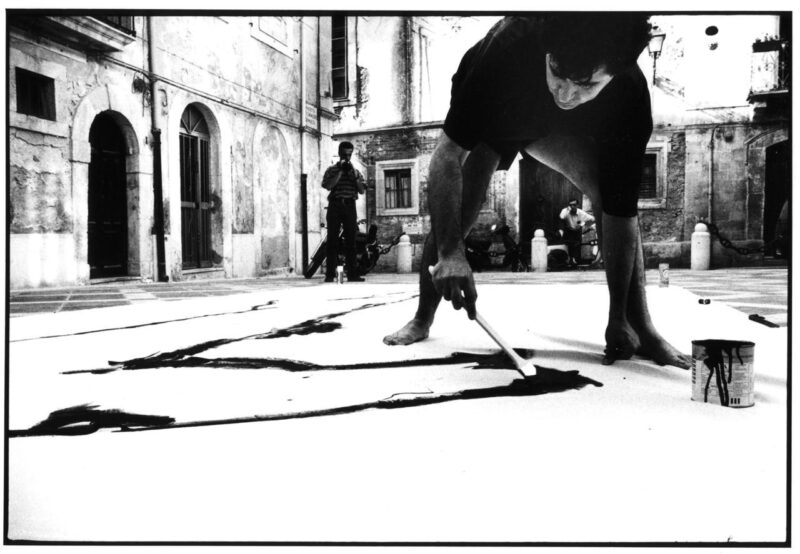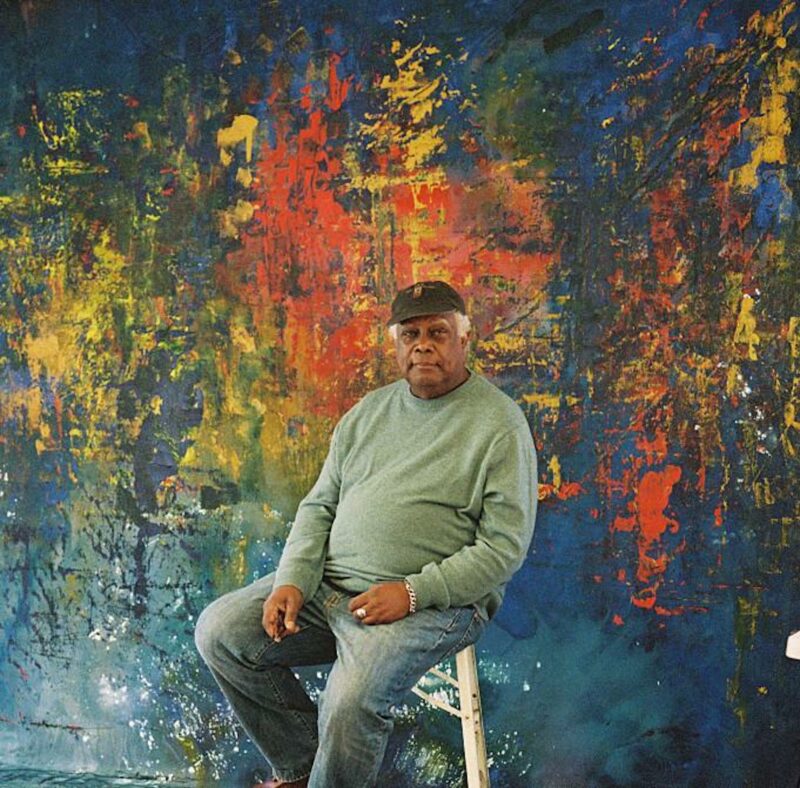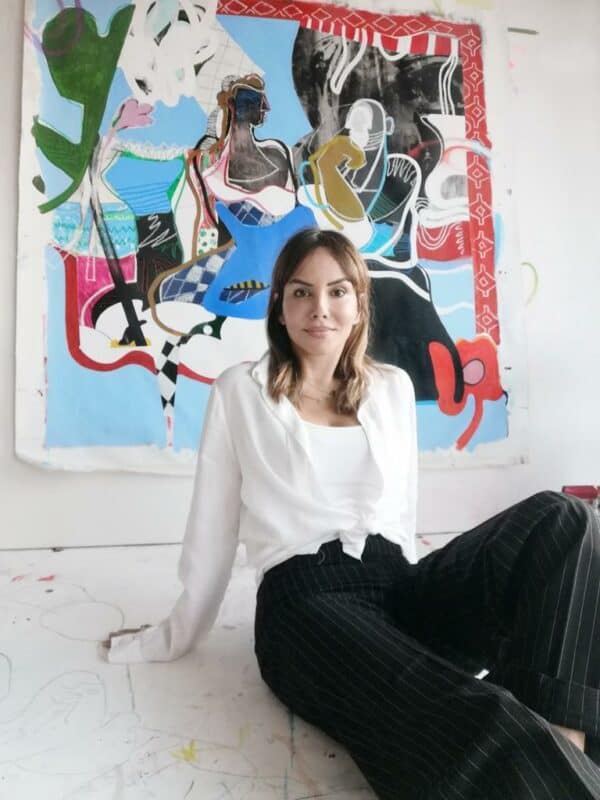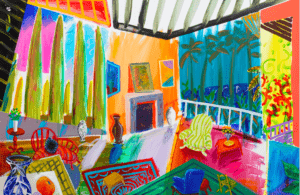Varvara Roza Galleries and The Blender Gallery are presenting “Ideal Lines”, the first major UK solo exhibition by acclaimed abstract artist Ioannis Lassithiotakis, at Gallery 8, 8 Duke Street, St. James’s, Mayfair until 23rd October.
In the London exhibition, Lassithiotakis presents mainly large-scale works, austere in their rendering and focused on the conceptual and aesthetic importance of monochrome surfaces on which a primordial, archetypal element of human expression is often inscribed: the line. This new body of work reflects the artist’s exploration of issues including human relations, death and absence. He also examines the very definition of art itself through content and aesthetics.

Ioannis Lassithiotakis was born in 1956 in Crete and studied in Italy at the Academy of Fine Arts, Florence. He has had over 33 solo exhibitions worldwide in international galleries and important museums worldwide and is the recipient of many international awards. His compositions, thoroughly researched and conceptually apt, have increasingly attracted the attention of international galleries and major Museums in Europe. Lassithiotakis has presented his work in solo exhibitions in Greece and abroad (Australia, Belgium, U.S.A., Japan, South Africa), counting most notably the 2nd Biennale of Young European Artists of the Mediterranean (Thessaloniki, 1986), the Osaka Triennial (Japan, 1996) and the 4th International Biennale of Sarjah (U.A.E., 1999), where he won the 2nd painting prize. A monograph on his oeuvre was published in 2007.
Lee Sharrock: Your exhibition with Varvara Roza Galleries is your first solo exhibition in the UK. What should visitors to the exhibition expect – are you exhibiting new paintings?
Ioannis Lassithiotakis: In this exhibition, we present paintings from all the stages of this latest phase in my work. Starting in 2016 and coming up to 2021, the works exhibited will give the viewer a fairly good idea of the evolution my art has gone through during these years.

LS: Where did the exhibition title ‘Ideal Lines’ come from?
IL: There is an allusion to Cavafy’s poem ‘Ideal voices’, which originally brought to my mind the title (in Greek ‘ideal voices’ rhymes with ‘ideal lines’). This came at a time when I felt that the direction my work was taking was that of idealization, not towards the extremes, but towards the classical middle: The geometrical regularity of ancient Egyptian art, the ideal delineation of space of Classical Antiquity and the Renaissance, but also the avant-garde movements of the start of the last century that sought to define artistic creation in terms of an equilibrium of the simplest visual elements. So, I thought that this title would capture well the essence of my work of this recent period, which is presented here.
LS: Have you always painted in the abstract style, or did you – like Mondrian – start out as an artist in a more representational manner?
IL: I started out painting in a more representational manner and throughout my artistic journey I have explored many different ways of painting and have absorbed the teachings of different schools and movements. During the last decade or so, following the direction that the work itself was drawing me to, I have gradually turned towards a more abstract, non-objectual and lately even more minimalist style. It is a mode of expression that redeems and liberates me in a number of ways, opening for me new roads that I was not able to see previously.
However, I feel that, deep down, the essence of abstract painting is not that different from that of representational painting: They both aim to capture aspects of the world, as the artist understands or imagines it, and present them in more or less direct ways, in the language that is available to the artist. And I can see now that, just as certain abstract features were present in my early representational works, a very strong element of representational depiction is still present in the latest abstract ones. I thus hope that the way people will experience these works will not differ that much from the way they experience more conventional representational paintings.

LS: Art historian Philosopher Dr. Haris Hatziioannou says that in the abstract language you use “the fundamental visual elements (point, line, plane, colour) have a power to speak on their own”. Do you feel that abstract art has power in its simplicity, and what message are you trying to communicate to the viewer through your painting?
IL: Well, the message depends on the viewer, her disposition and capacities, as much as on the artist. My latest paintings are indeed visually simple, depicting lines and monochromatic surfaces in contrasting dialogues. At the same time, I believe that this simplicity has the power to convey universal concepts or feelings, and I hope that the viewer will find the time and patience to dwell on their possible meanings and to draw connotations and projections from these simple visual elements. So, if there is a message at all in this work, it is this: that painting still has the power to generate a deep universal experience using simple, modest elements.
LS: Could you describe the process of creating each painting? Do you start with a drawing and then apply paint, or do you apply paint directly to the canvas? And what is the inspiration at the heart of each painting – do you take a natural phenomenon or a human feeling as as start point, and explore how you can extract its essence to create an abstract artwork (in a similar way to an abstract artist such as Bridget Riley who has often been inspired by the seasons in Provence).
IL: Regarding inspiration, I draw on a number of different cues and stimuli, be it from my personal life, feelings, thoughts and ideas, from my own previous work or that of other artists, or from other forms of art such as music or the cinema. However, it takes long hours of daily hard work in the studio to build upon these cues and come up with the final work. I do draw smaller models of the works and try them out in different dimensions and colours, thinking, agonizing about the end result I want to achieve and ruling out many different versions that do not fit my own principles and aesthetic. So the via negativa is as much part of my process of creation as the positive route itself.
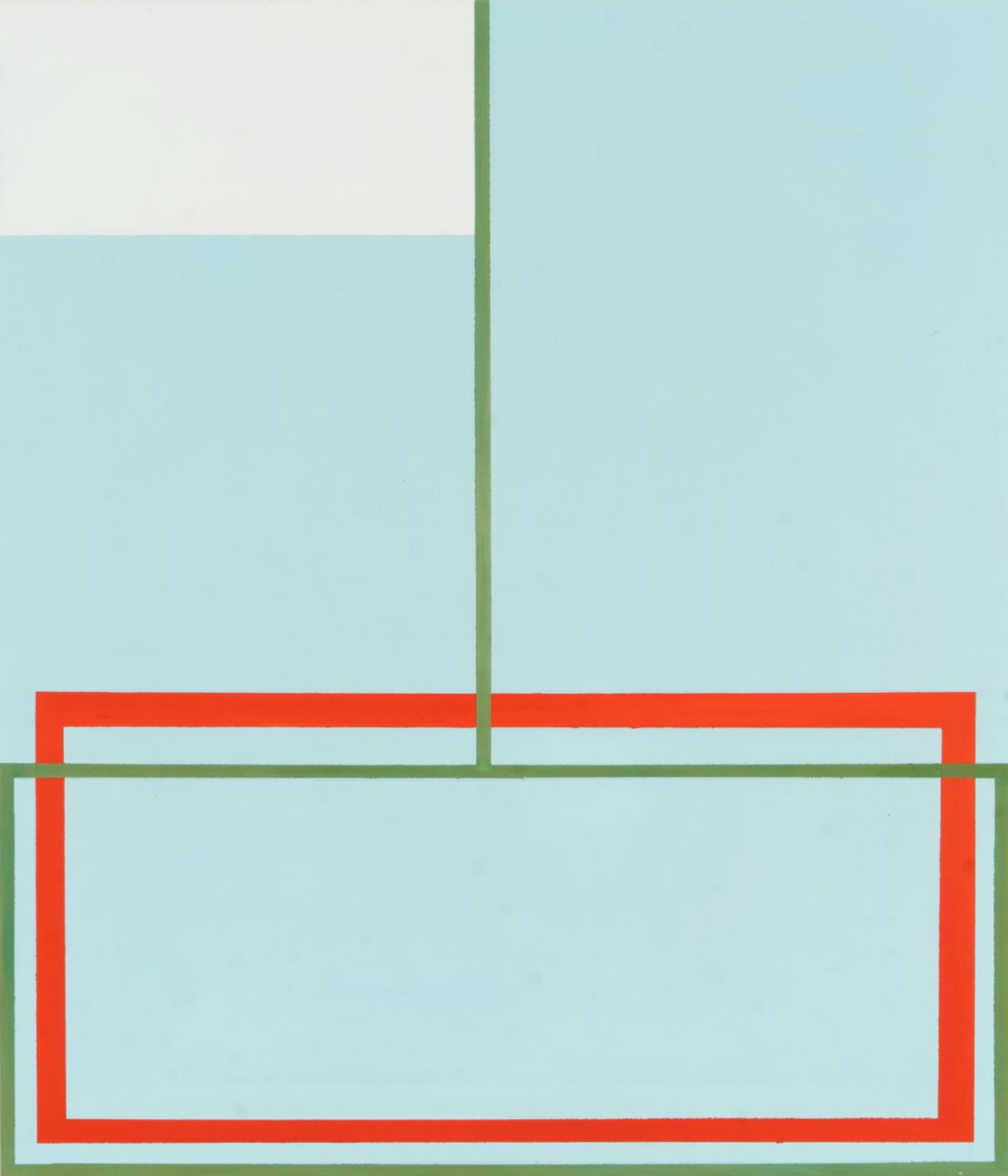
LS: Since graduating from the Academy of Fine Arts in Florence, you have had over 33 solo exhibitions worldwide in international galleries and important museums and you exhibited in the Osaka Triennial in Japan, and the 4th International Biennale of Sarjah. What is a career highlight for you so far, and what museum shows and exhibitions do you have coming up?
IL: It is extremely difficult for an artist to point out his career highlights, but I can state with confidence that when my painting was acquired by the Collection of Carl-Jürgen Schroth, was one of the most important highlights of my career.
Regarding my future plans, I will only say they are indeed looking very promising. Varvara Roza, CEO of Varvara Roza Galleries, has some exciting plans for future exhibitions, which we will reveal nearer the time!
Ioannis Lassithiotakis ‘Ideal Lines’, Gallery 8, 8 Duke Street, St. James’s, Mayfair – 23rd October: varvararozagalleries.com


